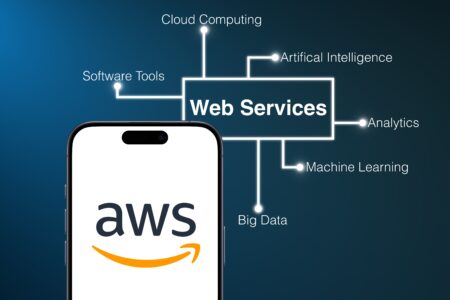Risk always remains a dynamic reflection of financial markets, insider threats, global policy, and external adversaries. These dynamic events may happen immediately or over an extended period of time. Risk professionals do not have an easy task in managing a wide range of risks, while also responding to a global market that’s slowly recovering from the disruption of the pandemic. Real-time information from the public comes from numerous sources, such as local news stories, internet of things (IoT) sensors, and other places that offer a window into relevant insights.
Understanding how to harness the power of real-time information is essential for detecting potential risks. Enterprises need to realize that a fast response time isn’t a luxury, but it’s a necessity in these uncertain times. A vast majority of risk professionals believe that gaining insights into real-time information is more necessary today than in the past. In addition, risk decision-makers need to leverage more solutions for proper risk management.
Understanding real-time information serves as an important indicator of potential outcomes. Companies often have much more confidence in the use of real-time information if the data is being received within minutes or seconds. Access to real-time alerts allows these businesses to benefit from a risk management solution compared to other companies that receive this information within a few hours or longer. Businesses that see delayed information will often experience more challenges with scaling real-time data to respond to various risks.
Real-Time Business Information Systems
Organizations now realize that enterprise risk management is essential to a world that’s emerging from a pandemic. Most of these companies leverage real-time information to understand data, but following actionable insights is often a very different story. A lot of the teams lack organizational structure and technology to quickly gather information and gain additional insights. These challenges often lead to costly vulnerabilities for risk management.
Breakdowns throughout the team highlight various cultural problems. Risk management relies on everyone working together to create a business resilience plan. Modern teams prioritize visibility, communication, and technology innovations to make faster and better decisions. One study found that half of the businesses believe that the culture of their business remains a challenge in managing real-time information. A lack of cross-functional collaboration and inflexibility often results in significant challenges in developing a process for handling real-time information.
Inflexible technology makes it difficult to see unexpected events. These tech problems often create an expensive challenge for low to moderate maturity companies. Inflexible tools are also the main challenge for operationalizing real-time information to gain an early view of unforeseen events.
Many businesses are often not confident in their ability to obtain insights from real-time information. This lack of confidence makes it difficult for companies to gain the necessary insights to make an impactful response. Gaining full confidence is often lacking in finding emerging risks in real-time. Many risk decision-makers are confident in finding and monitoring information but are less confident in gaining insights, as they often struggle with interpreting real-time information. Truly unlocking the potential of real-time information will result in companies using technology to make it easier to make better decisions.
Business Resilience Plan and Real-Time Alerts
Risk management specialists not only need to create robust strategies but also need to have the technology in place to protect employees and keep assets safe. Business resiliency needs to identify solutions to meet unique challenges while also making it possible to focus on proactive decision-making, response times, and analysis. Businesses need to make an investment in an enterprise risk management solution to best meet their unique needs.
Creating a business resiliency plan allows firms to focus on managing risks, such as implementing real-time alerts. Technology that’s easy to use is key in making it simple for risk leaders to manage everything in real-time. Scaling these solutions is also important to ensure that a business resilience plan is easy to use with existing technology. Simplicity and flexibility are key with a real-time solution due to the numerous challenges facing businesses. Real-time information that’s available across departments is an ideal solution for handling specific risks.
Risk leaders focus on finding a solution that offers speed, responsiveness, and business resiliency. The majority of leaders expect certain outcomes in focusing on risk management in real-time. One of the most important aspects is to create an effective response focused on speed while also using the latest AI for real-time alerts. Additionally, focusing on business continuity and improving operational efficiency often increases with time.
The expected benefits for risk management leaders often vary with their understanding of real-time information. An accurate understanding of real-time information can often benefit a company in many ways, including:
- Advantage Over Competitors: Businesses that understand real-time alerts often have an advantage over competitors who do not fully understand how to handle real-time information.
- Greater Visibility: An accurate understanding of real-time information often results in enhanced visibility compared to other businesses that have a lack understanding of this data.
- Scalability: An accurate understanding of data will often gain an edge over their counterparts in knowing how to scale their operations.
- Advanced AI Technology for Real-Time Alerts: Using advanced AI technology is widely prevalent in organizations with an accurate understanding of real-time information.
Closing Recommendations
Companies Need to Anticipate Instead of Only Responding to the Unknown
Uncertainty across the globe and the rise of digital transformation is creating brand new conditions across the workplace. Real-time information enables businesses to respond to events proactively instead of waiting to take action afterward. Maintaining the status quo with a reactive response time will make it difficult for companies to keep up with evolving threats.
Timely Response can Prevent Wide-Ranging Disruption
Unexpected events can happen in a variety of ways. These events often negatively impact employees, assets, and business operations. A company’s ability to quickly respond to these problems in real-time will often make a big difference in business resiliency.
Use Real-Time Information to Empower Response Teams
One way to help risk-management teams respond to a crisis is to give them access to real-time information. All of this data can help with response efforts while also offering relevant insights.
Improve Communication of Risks to Prevent Information Silos
Focusing on enterprise risk management across the entire company can help prevent information silos. The sharing of information improves collaboration and helps ensure everyone is working together.
Use AI-Powered Automation to Improve Business Resiliency
Many companies use real-time information to stay well-informed throughout each workflow stage. AI-powered technology makes it possible to equip your risk management team to quickly respond to any situation with the help of business information systems.
Related DAC Content
History and Future of Artificial Intelligence (AI)
Why Non-Technical Employees Need Automation and AI Skills
How Automation Impacts the Workplace
California Privacy Law Prop 24 and Privacy Strategies
Ransomware Attacks and Your Cybersecurity Framework






